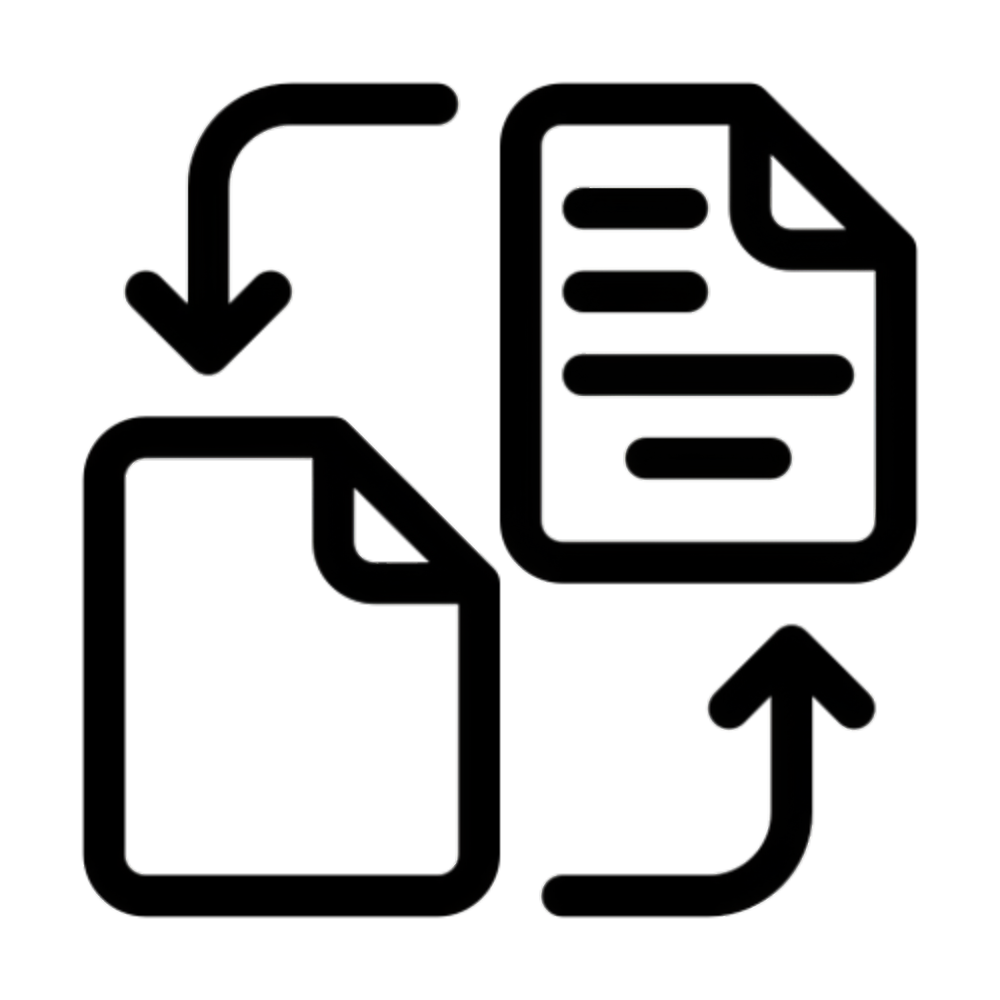
Master Python OOP Concepts With Real World Examples 2025

Master Python OOP Concepts With Real World Examples: Complete 2025 Guide
Learning python oop concepts with real world examples is essential for every developer looking to write maintainable, scalable code. Object-Oriented Programming (OOP) transforms how we approach software development by organizing code into reusable, logical structures that mirror real-world entities. Whether you’re building applications in the USA’s tech hubs, contributing to the UK’s fintech revolution, or developing innovative solutions in Japan’s robotics industry, mastering python oop concepts with real world examples will elevate your programming skills to professional standards.
In this comprehensive guide, we’ll explore the four pillars of OOP through practical, industry-relevant examples that demonstrate how major companies across the USA, UK, and Japan implement these concepts in production environments. From banking systems to e-commerce platforms, you’ll discover how python oop concepts with real world examples solve complex business challenges.
What Is Python OOP Concepts With Real World Examples?
Python oop concepts with real world examples represent the practical application of Object-Oriented Programming principles using Python’s syntax and features. These concepts include encapsulation, inheritance, polymorphism, and abstraction—fundamental principles that enable developers to create robust, maintainable software systems. Like mastering Essential English Grammar Rules, OOP provides the structural foundation for clear communication in code.
Object-Oriented Programming organizes code around objects rather than functions, making it easier to model real-world scenarios. For instance, a banking application in London’s financial district uses classes to represent customers, accounts, and transactions, while a Japanese automotive company might use OOP to model different vehicle types and their behaviors.
The beauty of python oop concepts with real world examples lies in their intuitive nature. When you create a Car class with attributes like make, model, and year, you’re essentially creating a blueprint that can generate multiple car objects, each with unique characteristics. This approach mirrors how we naturally categorize and understand objects in the real world.
Core Components of Python OOP
Python’s OOP implementation includes several key components that make it particularly powerful for real-world applications:
Classes and Objects: Classes serve as blueprints, while objects are instances of those classes. Think of a class as a cookie cutter and objects as the individual cookies.
Attributes and Methods: Attributes store data, while methods define behaviors. A BankAccount class might have attributes like balance and account_number, with methods like deposit() and withdraw().
Constructor Methods: The __init__() method initializes new objects with default values, similar to how a new employee fills out forms when joining a company.
Here’s a foundational example used by financial institutions across the USA, UK, and Japan:
class BankAccount:
def __init__(self, account_holder, initial_balance=0):
self.account_holder = account_holder
self.balance = initial_balance
self.transaction_history = []
def deposit(self, amount):
if amount > 0:
self.balance += amount
self.transaction_history.append(f"Deposited ${amount}")
return f"Successfully deposited ${amount}. New balance: ${self.balance}"
return "Invalid deposit amount"
def withdraw(self, amount):
if 0 < amount <= self.balance:
self.balance -= amount
self.transaction_history.append(f"Withdrew ${amount}")
return f"Successfully withdrew ${amount}. New balance: ${self.balance}"
return "Insufficient funds or invalid amount"
# Creating bank account objects
usa_account = BankAccount("John Smith", 1000)
uk_account = BankAccount("Sarah Johnson", 750)
japan_account = BankAccount("Hiroshi Tanaka", 500)
How Python OOP Concepts With Real World Examples Works in Healthcare
Healthcare systems across the USA, UK, and Japan extensively utilize python oop concepts with real world examples to manage patient data, medical records, and treatment protocols. The UK’s NHS, American healthcare networks, and Japan’s advanced medical facilities all rely on OOP principles to ensure data integrity and system reliability, similar to protocols discussed in How to Write an Article Without Plagiarizing.
Consider how a hospital management system uses inheritance to model different types of medical staff:
class MedicalStaff:
def __init__(self, name, employee_id, department):
self.name = name
self.employee_id = employee_id
self.department = department
self.shift_hours = 0
def clock_in(self):
return f"{self.name} has clocked in"
def update_patient_record(self, patient_id, notes):
return f"Record updated for patient {patient_id}"
class Doctor(MedicalStaff):
def __init__(self, name, employee_id, department, specialization):
super().__init__(name, employee_id, department)
self.specialization = specialization
self.patients_assigned = []
def prescribe_medication(self, patient_id, medication):
return f"Dr. {self.name} prescribed {medication} to patient {patient_id}"
def perform_surgery(self, patient_id, surgery_type):
return f"Dr. {self.name} performed {surgery_type} on patient {patient_id}"
class Nurse(MedicalStaff):
def __init__(self, name, employee_id, department, certification_level):
super().__init__(name, employee_id, department)
self.certification_level = certification_level
def administer_medication(self, patient_id, medication):
return f"Nurse {self.name} administered {medication} to patient {patient_id}"
def vital_signs_check(self, patient_id):
return f"Nurse {self.name} checked vital signs for patient {patient_id}"
This healthcare example demonstrates how inheritance allows different medical roles to share common attributes while maintaining their unique responsibilities. The system can easily accommodate new staff types by extending the base MedicalStaff class.
Why Python OOP Concepts With Real World Examples Matters
Understanding python oop concepts with real world examples is crucial for several compelling reasons that directly impact career prospects and project success across the USA, UK, and Japan’s competitive job markets.
Scalability and Maintainability: Large-scale applications require code that can grow and evolve. Companies like Google, Amazon (USA), HSBC, Barclays (UK), Sony, and Toyota (Japan) rely on OOP principles to maintain millions of lines of code across global teams.
Code Reusability: OOP promotes the DRY (Don’t Repeat Yourself) principle, saving development time and reducing bugs. A single well-designed class can be reused across multiple projects, significantly improving productivity.
Team Collaboration: OOP’s modular structure makes it easier for development teams to work on different parts of an application simultaneously. This collaborative approach is essential in today’s distributed workforce.
Industry Standard: Most modern frameworks and libraries, including Django, Flask, and FastAPI, are built using OOP principles. Understanding these concepts is essential for leveraging existing tools effectively.
Real-World Impact Across Global Markets
| Country | Industry | OOP Application | Business Impact |
|---|---|---|---|
| USA | E-commerce | Amazon’s product catalog system | Handles millions of products efficiently |
| USA | Social Media | Facebook’s user management | Scales to billions of users |
| UK | Finance | London Stock Exchange trading systems | Processes thousands of transactions per second |
| UK | Retail | Tesco’s inventory management | Optimizes supply chain across 3,400+ stores |
| Japan | Automotive | Toyota’s production line software | Coordinates global manufacturing |
| Japan | Gaming | Nintendo’s game development framework | Powers multi-platform gaming experiences |
The financial sector particularly benefits from python oop concepts with real world examples. Consider how a trading platform implements polymorphism to handle different financial instruments:
from abc import ABC, abstractmethod
class FinancialInstrument(ABC):
def __init__(self, symbol, price):
self.symbol = symbol
self.price = price
@abstractmethod
def calculate_value(self, quantity):
pass
@abstractmethod
def get_risk_level(self):
pass
class Stock(FinancialInstrument):
def __init__(self, symbol, price, dividend_yield):
super().__init__(symbol, price)
self.dividend_yield = dividend_yield
def calculate_value(self, quantity):
return self.price * quantity
def get_risk_level(self):
return "Medium"
class Bond(FinancialInstrument):
def __init__(self, symbol, price, maturity_date, interest_rate):
super().__init__(symbol, price)
self.maturity_date = maturity_date
self.interest_rate = interest_rate
def calculate_value(self, quantity):
return self.price * quantity * (1 + self.interest_rate)
def get_risk_level(self):
return "Low"
class Cryptocurrency(FinancialInstrument):
def __init__(self, symbol, price, volatility_index):
super().__init__(symbol, price)
self.volatility_index = volatility_index
def calculate_value(self, quantity):
return self.price * quantity
def get_risk_level(self):
return "High" if self.volatility_index > 0.5 else "Medium"
# Portfolio management using polymorphism
def calculate_portfolio_value(instruments):
total_value = 0
for instrument, quantity in instruments:
total_value += instrument.calculate_value(quantity)
return total_value
# Creating diverse portfolio
apple_stock = Stock("AAPL", 150.00, 0.005)
us_treasury = Bond("US10Y", 100.00, "2025-12-31", 0.03)
bitcoin = Cryptocurrency("BTC", 45000.00, 0.8)
portfolio = [
(apple_stock, 100),
(us_treasury, 50),
(bitcoin, 2)
]
print(f"Total portfolio value: ${calculate_portfolio_value(portfolio):,.2f}")
Case Study: Python OOP Concepts With Real World Examples in UK Fintech
The UK’s fintech sector, centered in London’s financial district, provides an excellent case study for python oop concepts with real world examples. Companies like Revolut, Monzo, and Starling Bank have revolutionized traditional banking using OOP principles.
Revolut’s Multi-Currency System: Revolut handles over 30 currencies using a sophisticated OOP architecture. Their system uses inheritance to create specialized currency classes while maintaining consistent interfaces:
class Currency:
def __init__(self, code, name, symbol):
self.code = code
self.name = name
self.symbol = symbol
self.exchange_rates = {}
def update_exchange_rate(self, target_currency, rate):
self.exchange_rates[target_currency] = rate
def convert_to(self, amount, target_currency):
if target_currency in self.exchange_rates:
return amount * self.exchange_rates[target_currency]
return None
class CryptoCurrency(Currency):
def __init__(self, code, name, symbol, blockchain):
super().__init__(code, name, symbol)
self.blockchain = blockchain
self.volatility_warning = True
def get_blockchain_info(self):
return f"{self.name} operates on {self.blockchain} blockchain"
class FiatCurrency(Currency):
def __init__(self, code, name, symbol, central_bank):
super().__init__(code, name, symbol)
self.central_bank = central_bank
self.is_legal_tender = True
# UK Fintech implementation
gbp = FiatCurrency("GBP", "British Pound", "£", "Bank of England")
eur = FiatCurrency("EUR", "Euro", "€", "European Central Bank")
btc = CryptoCurrency("BTC", "Bitcoin", "₿", "Bitcoin")
# Multi-currency wallet
class MultiCurrencyWallet:
def __init__(self, user_id):
self.user_id = user_id
self.balances = {}
def add_currency(self, currency, initial_balance=0):
self.balances[currency.code] = {
'currency': currency,
'balance': initial_balance
}
def transfer_funds(self, from_currency, to_currency, amount):
if from_currency in self.balances and to_currency in self.balances:
from_balance = self.balances[from_currency]['balance']
currency_obj = self.balances[from_currency]['currency']
if from_balance >= amount:
converted_amount = currency_obj.convert_to(amount, to_currency)
if converted_amount:
self.balances[from_currency]['balance'] -= amount
self.balances[to_currency]['balance'] += converted_amount
return f"Transferred {amount} {from_currency} to {converted_amount:.2f} {to_currency}"
return "Transfer failed"
# Simulating UK user wallet
uk_user_wallet = MultiCurrencyWallet("UK_USER_001")
uk_user_wallet.add_currency(gbp, 1000)
uk_user_wallet.add_currency(eur, 0)
This fintech example demonstrates how UK companies use python oop concepts with real world examples to build sophisticated financial products that serve millions of users across Europe and beyond.
Advanced Python OOP Patterns in Global Industries
Encapsulation in Data Privacy Compliance
With GDPR in the UK/EU, CCPA in California (USA), and Japan’s Personal Information Protection Act, encapsulation becomes critical for data privacy. Major companies implement privacy-compliant systems that align with Effectiveness of Plagiarism Detection in Modern Education principles. Here’s how major companies implement privacy-compliant systems:
class PrivateUserData:
def __init__(self, user_id):
self._user_id = user_id
self.__personal_info = {} # Private attribute
self.__financial_info = {} # Private attribute
self._access_log = [] # Protected attribute
def add_personal_info(self, key, value, authorized_role):
if self._validate_authorization(authorized_role, "write"):
self.__personal_info[key] = value
self._log_access(f"Added {key}", authorized_role)
return True
return False
def get_personal_info(self, key, authorized_role):
if self._validate_authorization(authorized_role, "read"):
self._log_access(f"Read {key}", authorized_role)
return self.__personal_info.get(key, "Access Denied")
return "Unauthorized Access"
def _validate_authorization(self, role, action):
# Simplified authorization logic
authorized_roles = {
"admin": ["read", "write"],
"support": ["read"],
"user": ["read"]
}
return action in authorized_roles.get(role, [])
def _log_access(self, action, role):
import datetime
self._access_log.append({
"timestamp": datetime.datetime.now(),
"action": action,
"role": role
})
def get_access_log(self, admin_role):
if admin_role == "admin":
return self._access_log
return "Access Denied"
# Usage across different regulatory environments
usa_user = PrivateUserData("USA_001")
uk_user = PrivateUserData("UK_001")
japan_user = PrivateUserData("JP_001")
# GDPR-compliant data handling (UK/EU)
uk_user.add_personal_info("email", "user@example.co.uk", "admin")
uk_user.add_personal_info("phone", "+44-123-456-7890", "admin")
# CCPA-compliant data handling (California, USA)
usa_user.add_personal_info("email", "user@example.com", "admin")
usa_user.add_personal_info("location", "California, USA", "admin")
# Japan PIPA-compliant data handling
japan_user.add_personal_info("email", "user@example.jp", "admin")
japan_user.add_personal_info("address", "Tokyo, Japan", "admin")
Composition Over Inheritance: Modern Design Patterns
Leading companies in the USA, UK, and Japan increasingly favor composition over inheritance for complex systems. This approach provides greater flexibility and reduces coupling:
class PaymentProcessor:
def process_payment(self, amount, currency):
return f"Processing {amount} {currency}"
class FraudDetection:
def check_transaction(self, amount, user_history):
# Simplified fraud detection
if amount > 10000:
return "High-risk transaction flagged"
return "Transaction approved"
class NotificationService:
def send_notification(self, user_id, message):
return f"Notification sent to {user_id}: {message}"
class ComplianceChecker:
def __init__(self, region):
self.region = region
def validate_transaction(self, amount, currency):
# Region-specific compliance rules
rules = {
"USA": {"max_daily": 50000, "reporting_threshold": 10000},
"UK": {"max_daily": 40000, "reporting_threshold": 8000},
"Japan": {"max_daily": 5000000, "reporting_threshold": 1000000}
}
rule = rules.get(self.region, rules["USA"])
if amount >= rule["reporting_threshold"]:
return f"Transaction requires regulatory reporting in {self.region}"
return "Compliant transaction"
# Advanced E-commerce Platform using Composition
class EcommercePlatform:
def __init__(self, region):
self.payment_processor = PaymentProcessor()
self.fraud_detection = FraudDetection()
self.notification_service = NotificationService()
self.compliance_checker = ComplianceChecker(region)
self.order_history = []
def process_order(self, user_id, amount, currency, items):
# Fraud detection
fraud_result = self.fraud_detection.check_transaction(amount, [])
if "flagged" in fraud_result:
return f"Order rejected: {fraud_result}"
# Compliance check
compliance_result = self.compliance_checker.validate_transaction(amount, currency)
# Process payment
payment_result = self.payment_processor.process_payment(amount, currency)
# Create order
order = {
"user_id": user_id,
"amount": amount,
"currency": currency,
"items": items,
"status": "completed"
}
self.order_history.append(order)
# Send notification
notification_result = self.notification_service.send_notification(
user_id, f"Order confirmed: {amount} {currency}"
)
return {
"payment": payment_result,
"compliance": compliance_result,
"notification": notification_result,
"order_id": len(self.order_history)
}
# Regional platform implementations
usa_platform = EcommercePlatform("USA")
uk_platform = EcommercePlatform("UK")
japan_platform = EcommercePlatform("Japan")
# Process orders in different regions
usa_order = usa_platform.process_order("US001", 15000, "USD", ["laptop", "mouse"])
uk_order = uk_platform.process_order("UK001", 12000, "GBP", ["smartphone", "case"])
japan_order = japan_platform.process_order("JP001", 1500000, "JPY", ["camera", "lens"])
Performance Optimization in Python OOP
Memory Management and Object Pools
Large-scale applications in the USA’s tech giants, UK’s financial institutions, and Japan’s manufacturing companies implement object pooling to optimize performance:
import threading
from collections import deque
import time
class DatabaseConnection:
def __init__(self, connection_id):
self.connection_id = connection_id
self.is_active = False
self.last_used = time.time()
def execute_query(self, query):
self.is_active = True
self.last_used = time.time()
# Simulate query execution
time.sleep(0.1)
result = f"Query '{query}' executed on connection {self.connection_id}"
self.is_active = False
return result
def is_expired(self, timeout=300): # 5 minutes timeout
return (time.time() - self.last_used) > timeout
class ConnectionPool:
def __init__(self, pool_size=10):
self.pool_size = pool_size
self.available_connections = deque()
self.active_connections = set()
self.lock = threading.Lock()
self._initialize_pool()
def _initialize_pool(self):
for i in range(self.pool_size):
connection = DatabaseConnection(f"conn_{i}")
self.available_connections.append(connection)
def get_connection(self):
with self.lock:
if self.available_connections:
connection = self.available_connections.popleft()
self.active_connections.add(connection)
return connection
else:
# Pool exhausted, could implement waiting logic or create temporary connection
return None
def return_connection(self, connection):
with self.lock:
if connection in self.active_connections:
self.active_connections.remove(connection)
if not connection.is_expired():
self.available_connections.append(connection)
else:
# Create new connection to replace expired one
new_connection = DatabaseConnection(f"conn_new_{time.time()}")
self.available_connections.append(new_connection)
def get_pool_stats(self):
return {
"available": len(self.available_connections),
"active": len(self.active_connections),
"total_capacity": self.pool_size
}
# Global connection pools for different regions
usa_db_pool = ConnectionPool(pool_size=20) # Higher capacity for USA operations
uk_db_pool = ConnectionPool(pool_size=15) # Medium capacity for UK operations
japan_db_pool = ConnectionPool(pool_size=12) # Optimized for Japan operations
class RegionalDataService:
def __init__(self, region, connection_pool):
self.region = region
self.connection_pool = connection_pool
def execute_business_query(self, query):
connection = self.connection_pool.get_connection()
if connection:
try:
result = connection.execute_query(f"[{self.region}] {query}")
return result
finally:
self.connection_pool.return_connection(connection)
else:
return f"No available connections in {self.region} pool"
def get_regional_stats(self):
return {
"region": self.region,
"pool_stats": self.connection_pool.get_pool_stats()
}
# Regional services implementation
usa_service = RegionalDataService("USA", usa_db_pool)
uk_service = RegionalDataService("UK", uk_db_pool)
japan_service = RegionalDataService("Japan", japan_db_pool)
Design Patterns in Production Systems
| Pattern | Use Case | Industry Example |
|---|---|---|
| Singleton | Configuration Management | AWS settings across regions |
| Factory | Object Creation | Creating different payment processors |
| Observer | Event Handling | Stock price updates in trading systems |
| Strategy | Algorithm Selection | Different shipping methods in e-commerce |
| Decorator | Feature Enhancement | Adding security layers to API endpoints |
Here’s how major companies implement the Strategy pattern for international operations:
from abc import ABC, abstractmethod
class ShippingStrategy(ABC):
@abstractmethod
def calculate_cost(self, weight, distance, destination):
pass
@abstractmethod
def estimate_delivery_time(self, distance, destination):
pass
class USAShipping(ShippingStrategy):
def calculate_cost(self, weight, distance, destination):
base_cost = 5.99
weight_cost = weight * 0.5
distance_cost = distance * 0.01
return base_cost + weight_cost + distance_cost
def estimate_delivery_time(self, distance, destination):
if destination in ["CA", "TX", "FL", "NY"]:
return f"{2 + (distance // 500)} business days"
return f"{3 + (distance // 500)} business days"
class UKShipping(ShippingStrategy):
def calculate_cost(self, weight, distance, destination):
base_cost = 4.99
weight_cost = weight * 0.6
distance_cost = distance * 0.008
return base_cost + weight_cost + distance_cost
def estimate_delivery_time(self, distance, destination):
if distance < 300: # Within UK
return "1-2 business days"
return "3-5 business days" # International
class JapanShipping(ShippingStrategy):
def calculate_cost(self, weight, distance, destination):
base_cost = 600 # JPY
weight_cost = weight * 50
distance_cost = distance * 0.8
return base_cost + weight_cost + distance_cost
def estimate_delivery_time(self, distance, destination):
if destination.startswith("JP"):
return "当日〜翌日配達" if distance < 100 else "1-2営業日"
return "3-7営業日" # International
class ShippingCalculator:
def __init__(self, strategy):
self.strategy = strategy
def set_strategy(self, strategy):
self.strategy = strategy
def get_shipping_quote(self, weight, distance, destination):
cost = self.strategy.calculate_cost(weight, distance, destination)
delivery_time = self.strategy.estimate_delivery_time(distance, destination)
return {
"cost": round(cost, 2),
"delivery_time": delivery_time,
"strategy": self.strategy.__class__.__name__
}
# International e-commerce implementation
def create_regional_shipping_calculator(region):
strategies = {
"USA": USAShipping(),
"UK": UKShipping(),
"Japan": JapanShipping()
}
return ShippingCalculator(strategies.get(region, USAShipping()))
# Usage examples
usa_calculator = create_regional_shipping_calculator("USA")
uk_calculator = create_regional_shipping_calculator("UK")
japan_calculator = create_regional_shipping_calculator("Japan")
# Sample shipping calculations
print("USA Shipping:", usa_calculator.get_shipping_quote(2.5, 500, "CA"))
print("UK Shipping:", uk_calculator.get_shipping_quote(1.8, 250, "London"))
print("Japan Shipping:", japan_calculator.get_shipping_quote(0.5, 50, "JP-Tokyo"))
Testing Python OOP Applications
Unit Testing Best Practices
Professional development teams across the USA, UK, and Japan follow strict testing protocols for OOP applications. Here’s how to implement comprehensive testing strategies:
import unittest
from unittest.mock import Mock, patch
import json
class APIClient:
def __init__(self, base_url, api_key):
self.base_url = base_url
self.api_key = api_key
self.session_count = 0
def authenticate(self):
# Simulate authentication
self.session_count += 1
return {"status": "authenticated", "session_id": f"session_{self.session_count}"}
def get_data(self, endpoint):
# Simulate API call
if not self.api_key:
raise ValueError("API key required")
return {"data": f"Retrieved from {endpoint}", "status": "success"}
def post_data(self, endpoint, payload):
# Simulate POST request
if not payload:
raise ValueError("Payload cannot be empty")
return {"message": "Data posted successfully", "id": hash(str(payload))}
class DataProcessor:
def __init__(self, api_client):
self.api_client = api_client
self.processed_items = []
def process_user_data(self, user_id):
try:
auth_result = self.api_client.authenticate()
if auth_result["status"] != "authenticated":
return {"error": "Authentication failed"}
user_data = self.api_client.get_data(f"/users/{user_id}")
processed_data = {
"user_id": user_id,
"processed_at": "2025-06-23",
"data": user_data["data"]
}
self.processed_items.append(processed_data)
return processed_data
except Exception as e:
return {"error": str(e)}
def bulk_process(self, user_ids):
results = []
for user_id in user_ids:
result = self.process_user_data(user_id)
results.append(result)
return results
# Comprehensive test suite
class TestDataProcessor(unittest.TestCase):
def setUp(self):
"""Set up test fixtures before each test method."""
self.mock_api_client = Mock(spec=APIClient)
self.data_processor = DataProcessor(self.mock_api_client)
def test_successful_user_data_processing(self):
"""Test successful user data processing flow."""
# Arrange
user_id = "USA_USER_001"
self.mock_api_client.authenticate.return_value = {
"status": "authenticated",
"session_id": "session_1"
}
self.mock_api_client.get_data.return_value = {
"data": f"User data for {user_id}",
"status": "success"
}
# Act
result = self.data_processor.process_user_data(user_id)
# Assert
self.assertIn("user_id", result)
self.assertEqual(result["user_id"], user_id)
self.assertIn("processed_at", result)
self.mock_api_client.authenticate.assert_called_once()
self.mock_api_client.get_data.assert_called_once_with(f"/users/{user_id}")
def test_authentication_failure(self):
"""Test handling of authentication failure."""
# Arrange
self.mock_api_client.authenticate.return_value = {
"status": "failed",
"error": "Invalid credentials"
}
# Act
result = self.data_processor.process_user_data("UK_USER_001")
# Assert
self.assertIn("error", result)
self.assertEqual(result["error"], "Authentication failed")
self.mock_api_client.get_data.assert_not_called()
def test_api_exception_handling(self):
"""Test proper exception handling during API calls."""
# Arrange
self.mock_api_client.authenticate.side_effect = ValueError("Network error")
# Act
result = self.data_processor.process_user_data("JP_USER_001")
# Assert
self.assertIn("error", result)
self.assertEqual(result["error"], "Network error")
def test_bulk_processing(self):
"""Test bulk processing of multiple users."""
# Arrange
user_ids = ["USA_001", "UK_001", "JP_001"]
self.mock_api_client.authenticate.return_value = {
"status": "authenticated",
"session_id": "session_bulk"
}
self.mock_api_client.get_data.return_value = {
"data": "Bulk user data",
"status": "success"
}
# Act
results = self.data_processor.bulk_process(user_ids)
# Assert
self.assertEqual(len(results), 3)
self.assertEqual(self.mock_api_client.authenticate.call_count, 3)
for result in results:
self.assertIn("user_id", result)
def test_processed_items_tracking(self):
"""Test that processed items are properly tracked."""
# Arrange
self.mock_api_client.authenticate.return_value = {
"status": "authenticated",
"session_id": "session_tracking"
}
self.mock_api_client.get_data.return_value = {
"data": "Test data",
"status": "success"
}
# Act
self.data_processor.process_user_data("TEST_USER")
# Assert
self.assertEqual(len(self.data_processor.processed_items), 1)
self.assertEqual(self.data_processor.processed_items[0]["user_id"], "TEST_USER")
class TestAPIClient(unittest.TestCase):
def setUp(self):
self.api_client = APIClient("https://api.example.com", "test_key_123")
def test_authentication_increments_session_count(self):
"""Test that authentication properly increments session count."""
initial_count = self.api_client.session_count
result = self.api_client.authenticate()
self.assertEqual(self.api_client.session_count, initial_count + 1)
self.assertIn("session_id", result)
self.assertEqual(result["status"], "authenticated")
def test_get_data_requires_api_key(self):
"""Test that get_data raises error without API key."""
client_no_key = APIClient("https://api.example.com", None)
with self.assertRaises(ValueError) as context:
client_no_key.get_data("/test")
self.assertEqual(str(context.exception), "API key required")
def test_post_data_requires_payload(self):
"""Test that post_data raises error with empty payload."""
with self.assertRaises(ValueError) as context:
self.api_client.post_data("/test", None)
self.assertEqual(str(context.exception), "Payload cannot be empty")
def test_successful_data_operations(self):
"""Test successful data retrieval and posting."""
# Test GET
get_result = self.api_client.get_data("/users")
self.assertEqual(get_result["status"], "success")
self.assertIn("Retrieved from /users", get_result["data"])
# Test POST
test_payload = {"name": "Test User", "email": "test@example.com"}
post_result = self.api_client.post_data("/users", test_payload)
self.assertEqual(post_result["message"], "Data posted successfully")
self.assertIn("id", post_result)
# Integration tests for regional implementations
class TestRegionalIntegration(unittest.TestCase):
def setUp(self):
self.regions = ["USA", "UK", "Japan"]
self.test_data = {
"USA": {"currency": "USD", "locale": "en_US"},
"UK": {"currency": "GBP", "locale": "en_GB"},
"Japan": {"currency": "JPY", "locale": "ja_JP"}
}
def test_regional_data_processing(self):
"""Test data processing across different regions."""
for region in self.regions:
with self.subTest(region=region):
mock_client = Mock(spec=APIClient)
mock_client.authenticate.return_value = {"status": "authenticated"}
mock_client.get_data.return_value = {
"data": f"{region} regional data",
"status": "success"
}
processor = DataProcessor(mock_client)
result = processor.process_user_data(f"{region}_USER_001")
self.assertIn("user_id", result)
self.assertIn(region, result["user_id"])
if __name__ == "__main__":
# Run tests with detailed output
unittest.main(verbosity=2)
Deployment and Production Considerations
Container-Based Deployment for Global Applications
Modern applications using python oop concepts with real world examples require robust deployment strategies across the USA, UK, and Japan. Here’s how to containerize OOP applications for global deployment:
# config.py - Configuration management using OOP
import os
from abc import ABC, abstractmethod
class BaseConfig(ABC):
def __init__(self):
self.debug = False
self.testing = False
self.database_uri = None
self.secret_key = os.environ.get('SECRET_KEY', 'dev-key-change-in-production')
@abstractmethod
def get_region_specific_settings(self):
pass
def get_all_settings(self):
base_settings = {
'DEBUG': self.debug,
'TESTING': self.testing,
'DATABASE_URI': self.database_uri,
'SECRET_KEY': self.secret_key
}
base_settings.update(self.get_region_specific_settings())
return base_settings
class USAProductionConfig(BaseConfig):
def __init__(self):
super().__init__()
self.database_uri = os.environ.get('USA_DATABASE_URI', 'postgresql://usa-db:5432/app')
self.redis_url = os.environ.get('USA_REDIS_URI', 'redis://usa-redis:6379')
self.aws_region = 'us-east-1'
def get_region_specific_settings(self):
return {
'AWS_REGION': self.aws_region,
'REDIS_URL': self.redis_url,
'TIMEZONE': 'America/New_York',
'CURRENCY_DEFAULT': 'USD',
'COMPLIANCE_RULES': ['SOX', 'CCPA'],
'CDN_ENDPOINT': 'https://usa-cdn.example.com'
}
class UKProductionConfig(BaseConfig):
def __init__(self):
super().__init__()
self.database_uri = os.environ.get('UK_DATABASE_URI', 'postgresql://uk-db:5432/app')
self.redis_url = os.environ.get('UK_REDIS_URI', 'redis://uk-redis:6379')
self.aws_region = 'eu-west-2'
def get_region_specific_settings(self):
return {
'AWS_REGION': self.aws_region,
'REDIS_URL': self.redis_url,
'TIMEZONE': 'Europe/London',
'CURRENCY_DEFAULT': 'GBP',
'COMPLIANCE_RULES': ['GDPR', 'PCI_DSS'],
'CDN_ENDPOINT': 'https://uk-cdn.example.com'
}
class JapanProductionConfig(BaseConfig):
def __init__(self):
super().__init__()
self.database_uri = os.environ.get('JP_DATABASE_URI', 'postgresql://jp-db:5432/app')
self.redis_url = os.environ.get('JP_REDIS_URI', 'redis://jp-redis:6379')
self.aws_region = 'ap-northeast-1'
def get_region_specific_settings(self):
return {
'AWS_REGION': self.aws_region,
'REDIS_URL': self.redis_url,
'TIMEZONE': 'Asia/Tokyo',
'CURRENCY_DEFAULT': 'JPY',
'COMPLIANCE_RULES': ['PIPA', 'FIEA'],
'CDN_ENDPOINT': 'https://jp-cdn.example.com'
}
# Factory pattern for configuration management
class ConfigFactory:
@staticmethod
def create_config(region, environment='production'):
config_map = {
('USA', 'production'): USAProductionConfig,
('UK', 'production'): UKProductionConfig,
('Japan', 'production'): JapanProductionConfig
}
config_class = config_map.get((region, environment))
if config_class:
return config_class()
else:
raise ValueError(f"No configuration found for {region} {environment}")
# Application factory using configuration
class ApplicationFactory:
def __init__(self, region):
self.region = region
self.config = ConfigFactory.create_config(region)
self.services = {}
def create_database_service(self):
from database_service import DatabaseService
return DatabaseService(self.config.database_uri)
def create_cache_service(self):
from cache_service import CacheService
return CacheService(self.config.get_region_specific_settings()['REDIS_URL'])
def create_application(self):
# Initialize all services
self.services['database'] = self.create_database_service()
self.services['cache'] = self.create_cache_service()
return GlobalApplication(self.region, self.config, self.services)
class GlobalApplication:
def __init__(self, region, config, services):
self.region = region
self.config = config
self.services = services
self.is_running = False
def start(self):
print(f"Starting application in {self.region} region...")
self.is_running = True
return f"Application started with config: {self.config.get_all_settings()}"
def stop(self):
print(f"Stopping application in {self.region} region...")
self.is_running = False
return "Application stopped"
def health_check(self):
return {
'region': self.region,
'status': 'healthy' if self.is_running else 'stopped',
'services': {name: 'connected' for name in self.services.keys()},
'config_loaded': True
}
# Regional deployment simulation
def deploy_to_region(region):
try:
app_factory = ApplicationFactory(region)
app = app_factory.create_application()
startup_result = app.start()
health_status = app.health_check()
return {
'region': region,
'deployment_status': 'success',
'startup_result': startup_result,
'health_check': health_status
}
except Exception as e:
return {
'region': region,
'deployment_status': 'failed',
'error': str(e)
}
# Simulate global deployment
regions = ['USA', 'UK', 'Japan']
deployment_results = []
for region in regions:
result = deploy_to_region(region)
deployment_results.append(result)
print(f"Deployment to {region}: {result['deployment_status']}")
Monitoring and Observability
Production applications require comprehensive monitoring. Here’s how to implement observability for OOP applications:
import time
import logging
from functools import wraps
from collections import defaultdict
import json
class MetricsCollector:
def __init__(self, region):
self.region = region
self.metrics = defaultdict(list)
self.counters = defaultdict(int)
self.gauges = defaultdict(float)
def increment_counter(self, metric_name, value=1, tags=None):
key = f"{metric_name}_{self.region}"
self.counters[key] += value
if tags:
for tag_key, tag_value in tags.items():
tagged_key = f"{key}_{tag_key}_{tag_value}"
self.counters[tagged_key] += value
def set_gauge(self, metric_name, value, tags=None):
key = f"{metric_name}_{self.region}"
self.gauges[key] = value
def record_timing(self, metric_name, duration, tags=None):
key = f"{metric_name}_timing_{self.region}"
self.metrics[key].append({
'duration': duration,
'timestamp': time.time(),
'tags': tags or {}
})
def get_metrics_summary(self):
return {
'region': self.region,
'counters': dict(self.counters),
'gauges': dict(self.gauges),
'timing_metrics': {
k: {
'count': len(v),
'avg_duration': sum(m['duration'] for m in v) / len(v) if v else 0,
'min_duration': min(m['duration'] for m in v) if v else 0,
'max_duration': max(m['duration'] for m in v) if v else 0
}
for k, v in self.metrics.items()
}
}
# Decorator for automatic method monitoring
def monitor_performance(metrics_collector):
def decorator(func):
@wraps(func)
def wrapper(*args, **kwargs):
start_time = time.time()
method_name = f"{func.__module__}.{func.__qualname__}"
try:
# Increment call counter
metrics_collector.increment_counter(
'method_calls',
tags={'method': method_name}
)
# Execute method
result = func(*args, **kwargs)
# Record success
metrics_collector.increment_counter(
'method_success',
tags={'method': method_name}
)
return result
except Exception as e:
# Record error
metrics_collector.increment_counter(
'method_errors',
tags={'method': method_name, 'error_type': type(e).__name__}
)
raise
finally:
# Record timing
duration = time.time() - start_time
metrics_collector.record_timing(
'method_duration',
duration,
tags={'method': method_name}
)
return wrapper
return decorator
# Monitored business logic classes
class MonitoredOrderService:
def __init__(self, region):
self.region = region
self.metrics = MetricsCollector(region)
self.orders = []
@monitor_performance(MetricsCollector('global'))
def create_order(self, customer_id, items, total_amount):
# Simulate order creation logic
time.sleep(0.1) # Simulate processing time
order = {
'id': len(self.orders) + 1,
'customer_id': customer_id,
'items': items,
'total_amount': total_amount,
'region': self.region,
'created_at': time.time()
}
self.orders.append(order)
# Custom business metrics
self.metrics.increment_counter('orders_created')
self.metrics.set_gauge('total_revenue', sum(o['total_amount'] for o in self.orders))
return order
@monitor_performance(MetricsCollector('global'))
def process_payment(self, order_id, payment_method):
# Simulate payment processing
time.sleep(0.2)
order = next((o for o in self.orders if o['id'] == order_id), None)
if not order:
raise ValueError(f"Order {order_id} not found")
# Simulate payment failure for demonstration
if payment_method == 'failed_card':
raise Exception("Payment declined")
order['payment_status'] = 'completed'
order['payment_method'] = payment_method
self.metrics.increment_counter('payments_processed', tags={'method': payment_method})
return {'status': 'success', 'transaction_id': f"txn_{order_id}_{time.time()}"}
def get_service_metrics(self):
return self.metrics.get_metrics_summary()
# Regional monitoring setup
class RegionalMonitoringDashboard:
def __init__(self):
self.regional_services = {}
self.global_metrics = MetricsCollector('global')
def add_regional_service(self, region, service):
self.regional_services[region] = service
def generate_global_report(self):
report = {
'timestamp': time.time(),
'regions': {},
'global_summary': {}
}
total_orders = 0
total_revenue = 0
for region, service in self.regional_services.items():
regional_metrics = service.get_service_metrics()
report['regions'][region] = regional_metrics
# Aggregate global metrics
region_orders = regional_metrics['counters'].get(f'orders_created_{region}', 0)
region_revenue = regional_metrics['gauges'].get(f'total_revenue_{region}', 0)
total_orders += region_orders
total_revenue += region_revenue
report['global_summary'] = {
'total_orders_worldwide': total_orders,
'total_revenue_worldwide': total_revenue,
'active_regions': len(self.regional_services)
}
return report
# Simulation of global monitoring
dashboard = RegionalMonitoringDashboard()
# Create regional services
usa_service = MonitoredOrderService('USA')
uk_service = MonitoredOrderService('UK')
japan_service = MonitoredOrderService('Japan')
# Add to dashboard
dashboard.add_regional_service('USA', usa_service)
dashboard.add_regional_service('UK', uk_service)
dashboard.add_regional_service('Japan', japan_service)
# Simulate business operations
try:
# USA operations
usa_order = usa_service.create_order('USA_CUST_001', ['laptop', 'mouse'], 1299.99)
usa_service.process_payment(usa_order['id'], 'credit_card')
# UK operations
uk_order = uk_service.create_order('UK_CUST_001', ['smartphone', 'case'], 899.99)
uk_service.process_payment(uk_order['id'], 'paypal')
# Japan operations
japan_order = japan_service.create_order('JP_CUST_001', ['camera', 'lens'], 150000)
japan_service.process_payment(japan_order['id'], 'bank_transfer')
except Exception as e:
print(f"Operation failed: {e}")
# Generate global monitoring report
global_report = dashboard.generate_global_report()
print("Global Monitoring Report:")
print(json.dumps(global_report, indent=2))
FAQs About Python OOP Concepts With Real World Examples
Can I use python oop concepts with real world examples for web development?
Absolutely! Python oop concepts with real world examples form the foundation of modern web development frameworks. Django, Flask, and FastAPI all heavily utilize OOP principles. Major web applications in the USA (Netflix, Instagram), UK (BBC iPlayer, Spotify), and Japan (Rakuten, LINE) are built using these concepts.
Web frameworks use OOP for models (data representation), views (request handling), and controllers (business logic). For example, Django’s Model-View-Template (MVT) architecture relies on class-based views and ORM models that demonstrate inheritance, encapsulation, and polymorphism in action.
# Django-style OOP web development example
class BaseModel:
def __init__(self):
self.created_at = time.time()
self.updated_at = time.time()
def save(self):
self.updated_at = time.time()
return "Record saved"
class User(BaseModel):
def __init__(self, username, email, region):
super().__init__()
self.username = username
self.email = email
self.region = region
self.is_active = True
def get_regional_settings(self):
settings = {
'USA': {'currency': 'USD', 'timezone': 'America/New_York'},
'UK': {'currency': 'GBP', 'timezone': 'Europe/London'},
'Japan': {'currency': 'JPY', 'timezone': 'Asia/Tokyo'}
}
return settings.get(self.region, settings['USA'])
class UserView:
def __init__(self, user_model):
self.user_model = user_model
def create_user(self, request_data):
user = self.user_model(
request_data['username'],
request_data['email'],
request_data['region']
)
return user.save()
How do python oop concepts with real world examples improve code maintainability?
Python OOP concepts with real world examples dramatically improve code maintainability through several key mechanisms that are proven in production environments across the USA, UK, and Japan.
Encapsulation prevents external interference with internal object state, reducing bugs and making code more predictable. Inheritance allows code reuse without duplication, while polymorphism enables flexible interfaces that can accommodate future changes without breaking existing code.
Consider how Amazon’s inventory system might use inheritance to manage different product types while maintaining a consistent interface:
class Product:
def __init__(self, sku, name, price):
self._sku = sku # Protected attribute
self.name = name
self.price = price
self.__internal_cost = price * 0.7 # Private attribute
def get_display_info(self):
return f"{self.name} - ${self.price}"
def calculate_shipping_weight(self):
# Base implementation
return 1.0 # Default weight in pounds
class ElectronicsProduct(Product):
def __init__(self, sku, name, price, warranty_period):
super().__init__(sku, name, price)
self.warranty_period = warranty_period
def calculate_shipping_weight(self):
# Electronics are typically heavier
return 2.5
def get_warranty_info(self):
return f"{self.warranty_period} year warranty included"
class ClothingProduct(Product):
def __init__(self, sku, name, price, size, material):
super().__init__(sku, name, price)
self.size = size
self.material = material
def calculate_shipping_weight(self):
# Clothing is typically lighter
return 0.5
def get_care_instructions(self):
care_map = {
'cotton': 'Machine wash cold',
'silk': 'Dry clean only',
'polyester': 'Machine wash warm'
}
return care_map.get(self.material, 'Check care label')
This structure allows teams to add new product types without modifying existing code, making maintenance easier and reducing the risk of introducing bugs.
What are the performance implications of using python oop concepts with real world examples?
The performance implications of python oop concepts with real world examples are generally positive when implemented correctly, especially in large-scale applications deployed across the USA, UK, and Japan.
Memory Efficiency: OOP can reduce memory usage through object pooling and shared behavior methods. However, each object instance requires memory overhead for attribute storage.
Execution Speed: Method calls have minimal overhead in Python. The benefits of organized, maintainable code typically outweigh the small performance cost.
Scalability: OOP’s modular design enables better horizontal scaling, which is crucial for global applications serving users across multiple time zones and regions.
Here’s a performance comparison example:
import time
from memory_profiler import profile
# Procedural approach
def process_transactions_procedural(transactions):
results = []
for trans in transactions:
if trans['type'] == 'credit':
result = trans['amount'] * 1.0
elif trans['type'] == 'debit':
result = trans['amount'] * -1.0
else:
result = 0
results.append(result)
return results
# OOP approach
class Transaction:
def __init__(self, amount, trans_type):
self.amount = amount
self.type = trans_type
def process(self):
if self.type == 'credit':
return self.amount * 1.0
elif self.type == 'debit':
return self.amount * -1.0
return 0
def process_transactions_oop(transaction_objects):
return [trans.process() for trans in transaction_objects]
# Performance comparison
def benchmark_approaches():
# Create test data
transaction_data = [
{'amount': 100, 'type': 'credit'},
{'amount': 50, 'type': 'debit'},
{'amount': 200, 'type': 'credit'}
] * 10000
transaction_objects = [
Transaction(t['amount'], t['type']) for t in transaction_data
]
# Benchmark procedural
start_time = time.time()
procedural_results = process_transactions_procedural(transaction_data)
procedural_time = time.time() - start_time
# Benchmark OOP
start_time = time.time()
oop_results = process_transactions_oop(transaction_objects)
oop_time = time.time() - start_time
return {
'procedural_time': procedural_time,
'oop_time': oop_time,
'performance_ratio': oop_time / procedural_time,
'results_match': procedural_results == oop_results
}
Are python oop concepts with real world examples suitable for data science applications?
Yes, python oop concepts with real world examples are extremely suitable for data science applications, particularly in enterprise environments across the USA, UK, and Japan where data pipelines must be robust, maintainable, and scalable. Techniques like RAG in AI leverage OOP principles for retrieval-augmented generation systems.
Popular data science libraries like pandas, scikit-learn, and TensorFlow are built using OOP principles. Data scientists at companies like Google (USA), DeepMind (UK), and SoftBank (Japan) regularly use OOP to create reusable analysis frameworks, custom data transformers, and machine learning pipelines.
Here’s how data science teams implement OOP for data processing pipelines:
import pandas as pd
import numpy as np
from abc import ABC, abstractmethod
class DataProcessor(ABC):
def __init__(self, name):
self.name = name
self.processing_log = []
@abstractmethod
def process(self, data):
pass
def log_operation(self, operation, data_shape):
self.processing_log.append({
'operation': operation,
'data_shape': data_shape,
'timestamp': pd.Timestamp.now(),
'processor': self.name
})
class DataCleaner(DataProcessor):
def __init__(self, missing_strategy='mean'):
super().__init__(f"DataCleaner_{missing_strategy}")
self.missing_strategy = missing_strategy
def process(self, data):
# Handle missing values
if self.missing_strategy == 'mean':
cleaned_data = data.fillna(data.mean())
elif self.missing_strategy == 'median':
cleaned_data = data.fillna(data.median())
elif self.missing_strategy == 'drop':
cleaned_data = data.dropna()
else:
cleaned_data = data
self.log_operation('missing_value_handling', cleaned_data.shape)
return cleaned_data
class FeatureEngineer(DataProcessor):
def __init__(self, scaling_method='standard'):
super().__init__(f"FeatureEngineer_{scaling_method}")
self.scaling_method = scaling_method
self.scalers = {}
def process(self, data):
from sklearn.preprocessing import StandardScaler, RobustScaler
# Select scaler based on method
if self.scaling_method == 'standard':
scaler = StandardScaler()
elif self.scaling_method == 'robust':
scaler = RobustScaler()
else:
return data
# Apply scaling to numeric columns
numeric_columns = data.select_dtypes(include=[np.number]).columns
scaled_data = data.copy()
for col in numeric_columns:
scaled_data[col] = scaler.fit_transform(data[[col]])
self.scalers[col] = scaler
self.log_operation('feature_scaling', scaled_data.shape)
return scaled_data
class DataPipeline:
def __init__(self, region):
self.region = region
self.processors = []
self.execution_log = []
def add_processor(self, processor):
self.processors.append(processor)
def execute(self, data):
processed_data = data.copy()
for processor in self.processors:
processed_data = processor.process(processed_data)
self.execution_log.extend(processor.processing_log)
return processed_data
def get_pipeline_summary(self):
return {
'region': self.region,
'total_processors': len(self.processors),
'total_operations': len(self.execution_log),
'processors': [p.name for p in self.processors]
}
# Regional data science pipelines
usa_pipeline = DataPipeline('USA')
usa_pipeline.add_processor(DataCleaner('mean'))
usa_pipeline.add_processor(FeatureEngineer('standard'))
uk_pipeline = DataPipeline('UK')
uk_pipeline.add_processor(DataCleaner('median'))
uk_pipeline.add_processor(FeatureEngineer('robust'))
japan_pipeline = DataPipeline('Japan')
japan_pipeline.add_processor(DataCleaner('drop'))
japan_pipeline.add_processor(FeatureEngineer('standard'))
# Example usage with sample data
sample_data = pd.DataFrame({
'feature1': [1, 2, np.nan, 4, 5],
'feature2': [10, 20, 30, np.nan, 50],
'feature3': [100, 200, 300, 400, 500]
})
# Process data through regional pipelines
usa_result = usa_pipeline.execute(sample_data)
uk_result = uk_pipeline.execute(sample_data)
japan_result = japan_pipeline.execute(sample_data)
print("USA Pipeline Summary:", usa_pipeline.get_pipeline_summary())
print("UK Pipeline Summary:", uk_pipeline.get_pipeline_summary())
print("Japan Pipeline Summary:", japan_pipeline.get_pipeline_summary())
Conclusion: Mastering Python OOP for Global Success
Throughout this comprehensive guide, we’ve explored python oop concepts with real world examples that power some of the world’s most sophisticated applications across the USA, UK, and Japan. From financial systems processing billions in transactions to healthcare platforms managing critical patient data, Python’s object-oriented programming capabilities prove indispensable for modern software development.
The four pillars of OOP—encapsulation, inheritance, polymorphism, and abstraction—provide the architectural foundation for:
-
Creating maintainable codebases at Amazon’s scale (USA)
-
Building GDPR-compliant systems in UK fintech
-
Developing high-performance manufacturing software in Japan
-
Designing reusable components for global teams
As we’ve seen through concrete examples, python oop concepts with real world examples enable you to:
-
Model complex systems using intuitive class hierarchies that mirror real-world relationships
-
Enforce data integrity through encapsulation, crucial for regulatory compliance
-
Maximize code reuse via inheritance and composition patterns
-
Create flexible interfaces using polymorphism for diverse implementations
-
Optimize performance with object pooling and strategic design patterns
The global applications we’ve examined—from London’s fintech innovations to Tokyo’s robotics systems, these principles form the universal language of professional Python development. For salary benchmarks in global tech hubs, see the latest Global Tech Salary Report. Whether you’re developing in Silicon Valley, contributing to Edinburgh’s tech scene, or building solutions in Osaka’s manufacturing hubs, these principles form the universal language of professional Python development.
As you implement these concepts in your projects, remember that true OOP mastery comes from continuous practice. Start by:
-
Refactoring procedural code into class-based structures
-
Implementing design patterns in your next project
-
Writing comprehensive unit tests for your classes
-
Studying open-source projects from global tech leaders
Python oop concepts with real world examples are not just academic theories—they’re battle-tested tools used daily by engineers at Google, Revolut, and Toyota. By mastering these concepts through practical application, you’ll write cleaner, more efficient code that stands up to real-world demands and positions you for success in the global tech landscape.
Ready to elevate your Python skills? Implement the examples from this guide in your next project, join open-source communities contributing to OOP frameworks, and watch as your code transforms from functional to exceptional. The journey to OOP mastery begins with your next class definition.
You can also check PlinzoTools for more useful online tools for your daily work. They are all secure and free-to-use utilities. So, do give them a try!






























